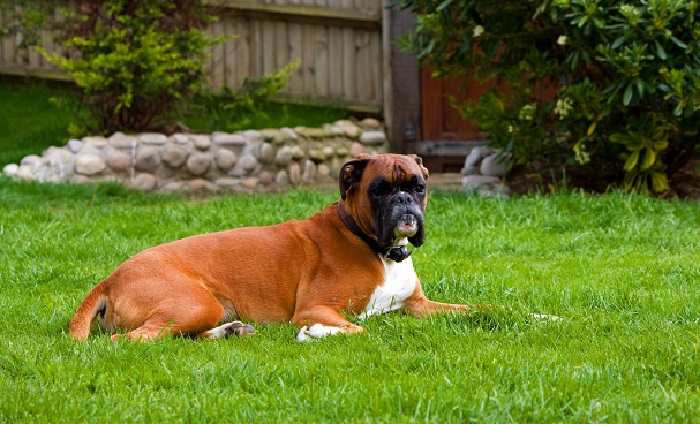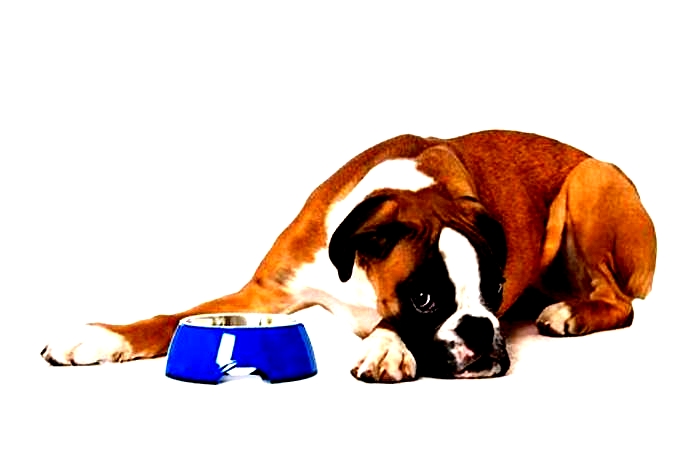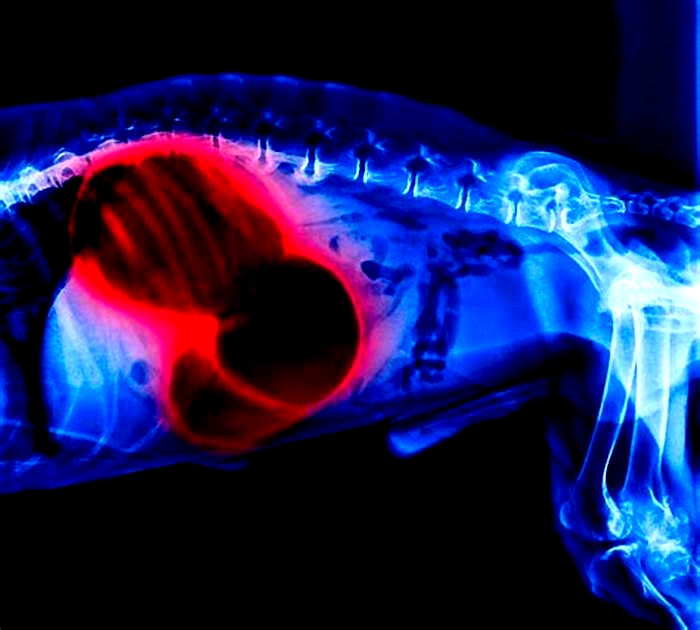Are Boxers high maintenance

Are Boxers High Maintenance?
Boxers are a beloved breed of dog by many. With their adorable jowls and playful personalities, its easy to see why. However, they do have a reputation for being high maintenance. In this article, well examine the pros and cons of owning a boxer, their temperament, the importance of proper training, grooming needs, feeding requirements, health issues, tips for managing their energy, cost considerations, and how they compare to other dog breeds.
The Pros and Cons of Owning a Boxer
Boxers are great family dogs. They are loyal, affectionate, and playful. They are also good with children and make great watchdogs. On the downside, they are a high-energy breed with a tendency to become destructive when they are bored or not adequately exercised. They also tend to be stubborn, which can make training challenging.
Its important to note that Boxers are prone to certain health issues, such as hip dysplasia, heart conditions, and cancer. Regular vet check-ups and proper care can help prevent or manage these issues. Additionally, Boxers have a short coat that requires minimal grooming, but they do shed quite a bit. If you or a family member has allergies, a Boxer may not be the best choice for a pet.
This article is part of my series onWhy boxers are the worst dogs.You might also want to checksolving common boxer behavior problems.
Understanding the Temperament of Boxers
Boxers are known for their silly and playful personalities. They are also strong-willed and independent, which can make training them a challenge. Boxers are typically good with children and other pets, but they can be protective of their families, which can make them wary of strangers. Its important to socialize your boxer puppy from an early age to prevent any potential aggression issues.
Boxers are also known for their high energy levels and need for exercise. They require daily walks and playtime to keep them physically and mentally stimulated. Without enough exercise, boxers can become bored and destructive. Additionally, boxers are prone to certain health issues such as hip dysplasia and heart problems, so its important to keep up with regular vet check-ups and maintain a healthy diet for your furry friend.
The Importance of Proper Training for Boxers
Training is essential for boxers. They are a breed that requires early, consistent, and positive training to prevent bad habits from forming. Boxers are strong-willed and can be stubborn, which can make them difficult to train. However, with patience, consistency, and positive reinforcement, they can be trained to be well-behaved and obedient pets.
Proper training not only helps boxers behave well, but it also keeps them physically and mentally healthy. Regular exercise and training sessions help boxers maintain their muscular and cardiovascular health. Additionally, training provides mental stimulation, which is crucial for preventing boredom and destructive behavior. A well-trained boxer is a happy and healthy companion that can bring joy and companionship to their owners for many years.
Grooming Needs for Boxers: How Much Time and Effort is Required?
Boxers have short, smooth coats that shed moderately year-round. They require minimal grooming, such as weekly brushing and occasional baths. However, they do have a tendency to drool, so you may need to wipe their faces regularly. Boxers also have high energy levels, so regular exercise and playtime are essential to prevent boredom and destructive behavior.
It is important to note that Boxers are prone to certain health issues, such as hip dysplasia and heart conditions. Regular visits to the vet and proper nutrition are crucial to maintaining their health and well-being. Additionally, Boxers are known for their loyalty and affection towards their owners, and thrive on human interaction and attention. They make great family pets, but require a lot of love and attention in return.
Feeding a Boxer: Diet and Nutritional Requirements
Boxers are a medium-sized breed, and they require a high-quality, balanced diet. They have a tendency to become overweight, so its essential to monitor their food intake and ensure they get adequate exercise. Boxers also require frequent meals throughout the day to prevent bloat, a potentially life-threatening condition. Consult with your veterinarian about the appropriate diet and feeding schedule for your boxer.
In addition to a balanced diet, its important to provide your boxer with fresh, clean water at all times. Dehydration can lead to serious health issues, so make sure your dog has access to water throughout the day. You may also want to consider adding supplements to your boxers diet, such as omega-3 fatty acids, which can help improve their coat and skin health. However, always consult with your veterinarian before adding any supplements to your dogs diet.
Health Issues Commonly Seen in Boxers
Boxers are generally healthy dogs, but they are prone to certain health issues, including hip dysplasia, heart problems, and cancer. Regular visits to the veterinarian and early detection of any health concerns can help to ensure your boxer stays healthy throughout their lifespan.
Another health issue commonly seen in boxers is hypothyroidism, which is a condition where the thyroid gland does not produce enough hormones. This can lead to weight gain, lethargy, and skin problems. Fortunately, hypothyroidism can be easily managed with medication and regular monitoring by a veterinarian.
Tips for Managing High-Energy Boxers
Boxers require a lot of exercise and playtime to manage their high-energy levels. Daily walks, runs, and playtime are recommended, and they thrive on interactive play and games that challenge them mentally and physically. Training and obedience classes can also help manage their energy and provide mental stimulation.
Its important to note that high-energy boxers can become destructive if they dont receive enough exercise and mental stimulation. Providing them with plenty of toys and puzzles to play with can help prevent destructive behavior. Additionally, crate training can be a useful tool for managing their energy when youre not able to supervise them.
Cost Considerations: How Much Does it Cost to Own a Boxer?
The cost of owning a boxer can vary depending on several factors, such as the cost of acquiring the dog, food and treats, veterinary care, grooming, and training. Its important to budget for these costs and ensure that you can afford to provide for your boxers needs throughout their lifespan.
One additional cost to consider when owning a boxer is potential medical expenses. Boxers are prone to certain health issues such as hip dysplasia, heart conditions, and cancer. These conditions can require expensive treatments and surgeries. Its important to have a plan in place for unexpected medical expenses and consider investing in pet insurance to help cover these costs.
Comparing Boxers to Other Dog Breeds: Is the High Maintenance Worth it?
Boxers are a unique breed with distinctive personalities and characteristics. While they may require more maintenance than some breeds, their loyalty, affection, and playful nature make them a popular choice for many families. When considering a boxer, its important to weigh the pros and cons and determine if their high-energy and grooming needs are a good fit for your lifestyle.
In conclusion, boxers are a beloved breed with many positive qualities. While they may require more maintenance than some breeds, with proper training, exercise, and care, they can make wonderful companions for many families.
Its important to note that while boxers may require more maintenance than some breeds, they also have a lower risk of certain health issues such as hip dysplasia and certain types of cancer. Additionally, boxers are known for their intelligence and trainability, making them a great choice for families who want a dog that can learn and follow commands easily. Overall, while the high maintenance of boxers may be a consideration, their many positive qualities make them a great choice for many families.
Im a dog enthusiast and creator of Doggie Connect, a blog sharing my experience caring for dogs. I love dogs and Im committed to helping others with dog care. Contact me at [email protected] for assistance.
Boxer Dog History, Health, Care, and Training
WorldAnimalFoundation.org is reader-supported. When you buy through links on our site, we may earn an affiliate commission. Learn More
Affectionate, alert, bright, and family-oriented, Boxer dogs are one of those few breeds who consistently ranked in AKCs top-10 ranking. Not only this, but the Boxer dog is also one of the most popular breeds in the United States due to such colorful and all-in-one sort of personality.
Boxer dogs can light up every dark room with their happy, animated, and high-spirited nature. And no, they are not over-friendly with strangers and are considered excellent watchdogs. Despite having a human-loving personality, these canines know whom to bond with!
Do you know that they were originally bred to hunt deer, wild boar, and bears? Yes, thats true, and thats why this hunting dog is called Boxer; While competing with giant animals, they use their super strong front paws in a special fighting style that we know as boxing.
Due to their aggressiveness, courage, determination, and unparalleled intelligence, Boxer dogs are also the favorite working dogs of police and military groups. But still, we cant deny their devotion towards their family members a quality that makes them incredible companion dogs, too.
You must have figured out how versatile this dogs personality is and that summarizing it in a few lines is impossible. So, lets have a closer look at this dog breed, its history, temperament, health, care, and training needs to help you understand it better!
About the Breed
This breed comprises medium-large sized dogs which pack in loads of energy. At first glance, these dogs might seem a serious type of canine that is always ready to bite you, but after knowing them a little, you get to learn about their sweet and, sometimes, silly personalities.
Speaking specifically of the Boxer dog breed, it originated from the cross between Bulldog and a now-extinct breed, the Bullenbeisser dog. Depending upon their bloodlines, this breed is further divided into seven different types of boxers.
1. German Boxers
German Boxers are considered the official, purebred Boxer dog breed. They tend to have a larger, denser body frame, making them look more muscular and more robust than other types.
2. American Boxers
American Boxers are the very first Boxers who got registered in the American Kennel Club. The more interesting point is that American Boxers were the last to develop from its other variants.
American Boxer, although, resembles German Boxer a lot, but still, you may differentiate both types by their facial features (American Boxers have fewer or no wrinkles on their faces)
3. United Kingdom Boxers
English or British Boxers are the most athletic and efficient of all the Boxer variants. They possess sleek, slender, yet muscular bodies with which they can easily pass through narrow areas and dense bushes.
The most distinctive aspect of English Boxers is their small stature, making them the smallest Boxer variant. Despite this small size, they possess remarkable speed, strength, and agility.
4. Brindle Boxers
As the name implies, this type of Boxer is separately classified from other Boxers due to its unique coat color, Brindle. This coat color is considered the standard Boxer color.
Color striping is also present, which could be either in light or dark shades. Based on the striping shade, Brindle Boxers are further divided into three classes; reverse brindle, mahogany brindle, and tiger brindle.Another rare type, flashy brindle, also exists, which contains striping in bright white markings.
5. Black Boxers
Black Boxers are considered the rarest variant, and unlike their names, they dont feature a solid black coat color but dark brown that seems black from a distance.Most of the time, these so-called black Boxers come with a fawn-colored background with dark & thick brindle strips. Resultantly, these dogs appear true black.
6. White Boxers
Both fawn and white male Boxers are found, but the white Boxer is considered inferior to those completely fawn and brindle Boxers. According to experts, white Boxers are more prone to catching severe diseases, like skin cancer, than other variants.
Contrary to the breed standards, these white Boxer dogs dont feature the black mask and are mostly referred to as albinos. Although they are white, most of the time, they might have fawn or brindle patches around their tails, ears, and eyes.
7. Fawn Boxers
Besides brindle, Fawn is considered the standard color in the Boxer breed. Some of them might come up with prominent white patches on paws, chests, and tails, making them the truest fawn and white Boxers.
Fawn Boxer dogs are the most common variant, and youd get to see multiple coat colors in them, ranging from light tan to deep red.
8. Boxador
Besides these seven types of Boxer dogs, another eighth type is also there, known as Boxador. These dogs are developed by the crossbreeding of Labrador Retrievers and Boxers and share the golden traits of both dog breeds.
History of the Boxer Dog
This dog breed belongs to Germany and is believed to be a descendant of a hunting Mastiff dog, the Bullenbeisser. For centuries, this German Bullenbeisser was used by hunters to catch and entangle prey, but soon, it got replaced by other dogs that were newer and faster hunting.
After this, these Bullenbeisser dogs began to work for farmers as guard dogs. In the 19th century, a Munich named George Alt bred a local dog with a brindle female Bullenbeisser. As a result of this crossbreeding, a white and fawn male was born, which is believed to be one of the Boxers ancestors.
George named this first litter Lechners box, which further bred to produce different types of litter, including a female called alts schecken. This modern female Bullenbeisser was then coupled with a Bulldog, resulting in the birth of the very first modern Boxer, Flocki.
Flocki was the first boxer to win the Munich show and to record his name in the German stud book. In 1894, three Boxer admirers decided to work for the promotion and preservation of this breed, for which they enrolled Boxers for dog shows.
In 1896, the very first Boxer club, named Deutscher Boxers club, was founded. The same club published a document stating Boxers breed standards in 1904, which have not been changed since then.
In the late 19th and early 20th centuries, the same breed was brought to the United Kingdom and the United States, respectively. However, it was not before 1904 that Boxer was considered a recognized breed by the National Breed Club of America.
In 1915, the National Club registered its first Boxer champion, Dampf vom Dom. Soon after this, the First World War erupted, in which Boxers were used for military operations as attack dogs, guard dogs, pack dogs, war dogs, messengers, and therapy dogs.
However, this breed became popular after World War ii when the returning soldiers took these dogs with them to their homes and introduced them to many new people. With their enchanting temperament and cute looks, this dog became the favorite of millions very soon.
Considering the increasing popularity of this breed, the American Boxer Club was founded in 1935, drawing a new standard list for the Boxer dog breed in 1938. By 1940, this breed managed to become the most popular dog breed in America, and still, its in seventh ranking in the AKC list of registered breeds.
Boxer Dog Facts

- Boxers drool a lot and thats why they are more prone to smell filthy, if not bathed after a few days.
- Due to having short-length coats, Boxers cant tolerate too hot or too cold weather.
- The average life expectancy of Boxers is 8-10 years. However, Boxador may live for up to 12-15 years due to having high resilience against genetically transmitted diseases.
- In a single litter, Boxer may deliver up to 5-7 puppies. On the other hand, the gestation period of Boxers is of about 62-64 days.
- Although the overall breeds tendency to bark is low, a Boxer puppy might be quite vocal and rumbustious. Even right after birth, the consistently whelped puppies make your place sounds like a fish market.
- The good thing here is that as the young dogs reach adulthood, they develop deep barks, with low barking tendencies. In this way, an adult Boxer will serve as an excellent watchdog, with a bark loud enough to alert you and an overall quiet & calm demeanor.
- Boxer dogs are considered one of the eight most vicious dog breeds which have caused harm to 74+ people in just a year.
Boxer Dog Appearance
Boxers come with well-developed bones & muscles and a square build. However, the most distinctive features of Boxers include distinctively shaped, tight skins, boxy heads, deep chests, undershot jaws, brachycephalic, short noses, and big, dark brown eyes.
In addition to this, their tails are high and cropped, whereas their ears might be folded or cropped when standing upright.
Size
Like other dogs, Boxer males stand taller than its female. Generally, a male Boxer could be 24 inches tall, whereas a female Boxer could stand between 20-22 inches. Considering this size range, Boxers are categorized as a medium-large-sized breed.
Weight
Weight depends upon size and gender. Generally, a fully-grown Boxer dog may weigh around 30-32 kgs, whereas an adult female may weigh about 25-27 kgs. The canine may weigh even heavier after not getting adequate exercise or a high-calorie diet.
Coat
Boxers feature glossy, short, flat, and single-layered coats, which feel super smooth and silky to the touch. This single layer of short Boxers coat doesnt prove enough to protect them from too cold or too hot weather, and thats why they are recommended for dog owners living in moderate regions.
However, this Boxers coat type also has a huge advantage over double-layered coats as it doesnt cause a hairy mess by shedding too much.
Color
As stated before, two coat colors that are considered standard for Boxers are fawn and brindle. Both of these colors may have bright white markings that could appear on the chest and belly and then extend to the neck and face. However, these flashy markings are unacceptable if they cover more than one-third of the entire body.
Fawn Boxer dogs may appear in a variety of shades, including dark honey blonde, stag red, mahogany, reddish tan, light tan, and yellow. On the other hand, Brindle Boxers possess black or dark-colored stripes against a fawn background.
Boxer Dog Temperament and Personality
Boxers are even-tempered dogs that tend to stay cheerful and loving around their owners but rageful and alert around strangers. These dogs can be the most dangerous canines out there since they have taken so many precious lives up till now.
However, such incidents are reported due to owners negligence or their poor skills in training their Boxers appropriately. Since their ancestors used to perform the duties of the guard dog, modern-day Boxers have guarding instincts which is the main reason for their protective nature.
They may feel jealous of seeing their owners getting closer to someone else. Likewise, they tend to choose one member as their favorite human towards whom they shower all of their love and loyalty. And when the same human begins to avoid Boxers, these dogs grow insecure and aggressive.
To suppress these undesirable traits, its important to start taking your Boxer pup to early socialization so they can develop a tolerance for other animals and humans. Sharing a hunting bloodline, these dogs will require thorough attention, time, practice, and socialization to get along with other dogs conveniently.
Since they belong to the group of working dogs, these high-energy dogs need to be involved in suitable canine sports and vigorous exercises. Otherwise, boredom may trigger unwanted behaviors like excessive barking, stubbornness, etc.
Considering this, Boxers are not for those who have super strict routines. Most importantly, never leave your Boxer out in the backyard alone since it will put his physical and mental health at risk and be impelled to escape in the hope of getting human interaction.
Boxers might show fiercely energetic temperaments during their puppyhood, but as they mature, they grow calm and quiet. However, one important thing to mention here is that, unlike other breeds, Boxers dont mature quickly as they require at least three to four years for this.
Their intelligence and loyalty make Boxers a good candidate for a family pet, but Boxer owners shouldnt expect this dog to be a cuddle machine. Yes, these dogs show affection but not by giving you wet kisses or tight hugs. Instead, Boxers express their love by pawing at your back.
They are self-assured and graceful canines that wont play a clown to get your attention. Having a mind of their own, they can take action on sensing threats without needing a go-ahead from the owner.However, to keep this independent approach within a limit, its important to start their obedience training from a very young age.
Boxer Dog Health and Care
Unfortunately, Boxer dogs dont have a powerful immune system and have a life expectancy of less than a decade as they develop life-threatening disorders from a young or middle age. Besides, inappropriate breeding practices are also increasing the ratio of genetic diseases in new Boxer generations.
Some of these health conditions, which are attacking Boxers more often nowadays, are as follows:
Boxer Cardiomyopathy (BCM)
Its a hereditary disease that tends to attack your Boxers heartmaking it weak and dysfunctional. In this condition, your dogs heart begins beating irrhythmically, causing collapse, seizures, and sudden death.
Since a dog with BCM doesnt show symptoms, theres no way to figure out whether something is bothering your canine. Still, if you notice an abnormal breathing pattern, take your Boxer to a veterinary cardiologist as soon as possible.
Hip Dysplasia
Many Boxers get affected by this disorder due to their excessively large needs for exercise and activity. In this condition, your dogs hip joint gets loose from the pelvic socket, which in turn affects your dogs mobility and normal gait.
In the early stage, this problem can be treated by physiotherapy; however, if diagnosed at the last stage, the only way to cure this ailment is via surgery.
Degenerative Myelopathy
This condition attacks your dogs spinal cord, which restricts its movement completely. In the earlier stage, your dog loses control of his rear paws, followed by gradual dysfunction of the digestive and excretory systems.
Cancer
All the light-colored Boxers, especially the white ones, carry tons of chances of catching skin cancers. Their bright skins catch harmful UV rays, which in turn expose them to the risk of skin cancers.Similarly, white Boxers carry the gene for deafness in their genetic makeup; therefore, its advised not to adopt or breed white Boxers.
Grooming Needs
Boxer dogs should be bathed at least once a month to prevent hygiene-related conditions. Similarly, their teeth should be brushed almost daily to prevent cavities or tartar buildup.
Due to low-shedding coats, they require very little grooming. Just remove the loose strands using the hound glove and check for skin infections almost regularly.
The only reason why Boxers are called high-maintenance dogs is their insane exercise needs. They need long daily strolls and enough mental stimulation to function correctly.
However, to maintain a balance, discuss your dogs age and diet with your vet so he can get better brief you about your pups exact needs for food and activity.
Boxer Dog Training
Even the Boxer puppies contain huge brains with which they can learn things super quickly. The best time to socialize with your Boxer pup is when he is eight weeks old. However, keep your dogs away from other dogs until their vaccination is completed.
You can start working on your dogs obedience from the very first day but remember, Boxers wont open themselves for training unless you have something delicious to offer in exchange. In other words, stuff your pockets with delicious treats so your Boxer will feel more encouraged to learn.
Conclusion
Most Boxers can be aggressive, but only if you wont pay enough attention to their upbringing. As a good pet parent, its your responsibility to purchase your Boxer from responsible breeders and invest proper time and attention to make them your ideal four-legged companions.
Since getting a rare quality Boxer is super difficult, youd need to pay around an Average of $1000 $2000 to purchase a pup from a reputable breeder. However, you can also find a healthy, purebred Boxer from the Boxer rescue groups, so its good to check for availability.









